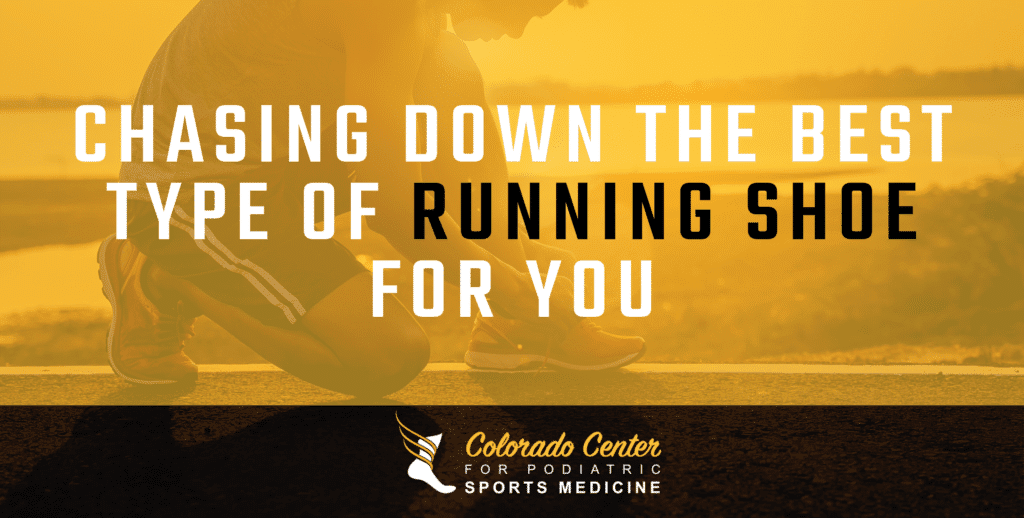Chasing Down the Best Type of Running Shoe for You
If you have decided to take up running, then first of all, good for you! Whether you consider it a hobby, a sport, or a discipline, it can have fantastic effects on your overall health, including that of your feet and ankles.
That said, those benefits will only last if you are practicing running properly and safely—and a huge part of setting yourself up for success is what type of running shoes you are using.
Running Shoe Choices Matter
You shouldn’t just start running in any old pair of shoes or sneakers that you own. If your shoes weren’t designed for running, odds are quite high that they will have a negative impact on your feet—by not properly taking the impacts of your running!
Running places repetitive forces on your feet. Just think of your body weight coming down on each foot, and how many times that happens in the span of just half an hour. All that force can add up over time and lead to overuse injuries such as stress fractures if you’re not careful.
Running shoes help mitigate the impact forces on your feet. They can also play an important role in controlling the motion of your foot as you run, helping to reduce your risk of other sports injuries, too. Other types of shoes—even shoes made for sports such as basketball or tennis—don’t have the optimal features for running in their design.
And even running shoes that do have the qualities you are looking for can have them in different ways for different types of running. Here are a few categories to consider:
Treading Terrain
Where do you plan on conducting most of your running? Will you be sticking mainly to pavement and streets, or do you want to venture out over more uneven trails?
Running shoes exist for both types of terrain, with benefits built for each!
- Road running shoes are designed with a focus on pavement, sidewalks, streets, and even treadmills. They tend to have a mesh upper and lining that makes the shoe more “breathable” (in other words, it helps keep sweat from pooling against the feet) and a rubber outsole for some light but effective traction.
- Trail running shoes tend to sacrifice a bit of the breathability of road shoes, but make up for it in added protection. They often have synthetic uppers to make them more durable across rugged terrain, as well as keep stuff like twigs and rocks away from your feet. Their outsole is also built for higher traction and a thicker barrier against the outside world.
If you plan on dividing your time between both types of terrain, don’t try to figure out which would be better: get both types! You’ll have the benefits of each when you need them, and each pair will last you longer, too.

Keeping Your Feet in Line
Another important consideration is how much stability and control your running shoes provide. This is especially important for those with abnormal foot structures or gait abnormalities (such as overpronation).
Our feet are built to naturally take heavy forces well. However, if there is something out of sorts about your foot structure, it can lead to excess stress in certain areas. This, in turn, can increase the risk of injury.
Conditions such as flat feet or high arches can cause such problems. Abnormalities in foot structure can also affect the way the foot mechanically operates. If you have overpronation, for example, your foot will roll inward farther than normal when you move. This can lead to aches and pains, plus you’ll end up expending more energy than someone with a neutral gait, everything else being equal.
Determining your gait can help you chose a level of stability or motion control that is ideal for your type. We can help you find out what your gait is, but a trained associate at a sporting goods and shoes store should also be able to help you.
We tend to classify stability on a scale that runs from a neutral shoe, to light stability, moderate stability, and then a “motion control” shoe with high stability. The level of stability that works best for you often correlates with your gait.
- If you overpronate, you will want a moderate stability or motion control shoe, to help keep your foot steady and not moving too much toward the inside.
- If you underpronate (also known as supination), then your foot does not roll inward far enough when you move. This is relatively rare, and a neutral or light stability shoe will likely serve you better than one that tries to keep your foot from rolling inward.
- If you have a normal gait, then the running shoe world is pretty much wide open to you! Choose a stability that feels best for you.
For some of us, our foot structure might be so severe, or there may be additional conditions making an impact, that just having a boost in stability may not be enough. In these cases, custom orthotics may be able to provide the additional targeted support and cushioning needed to keep feet happier while running.
If you do use custom orthotics, they should absolutely be part of your running shoes! Make sure your choice of footwear can accommodate them.
Take Care of Foot Problems Before Hitting Your Routes
Regardless of your choice of running shoes, they may not help you with an already existing source of heel pain or other trouble. We want to make sure you are at your best when pursuing your activities and goals, and that means both direct and preventative care when needed.
Schedule an appointment at our Longmont office by calling (720) 600-3380. If you prefer to reach us electronically, fill out our online contact form and a member of our staff will respond to you during our normal office hours.
© Colorado Center for Podiatric Sports Medicine | Privacy Policy

